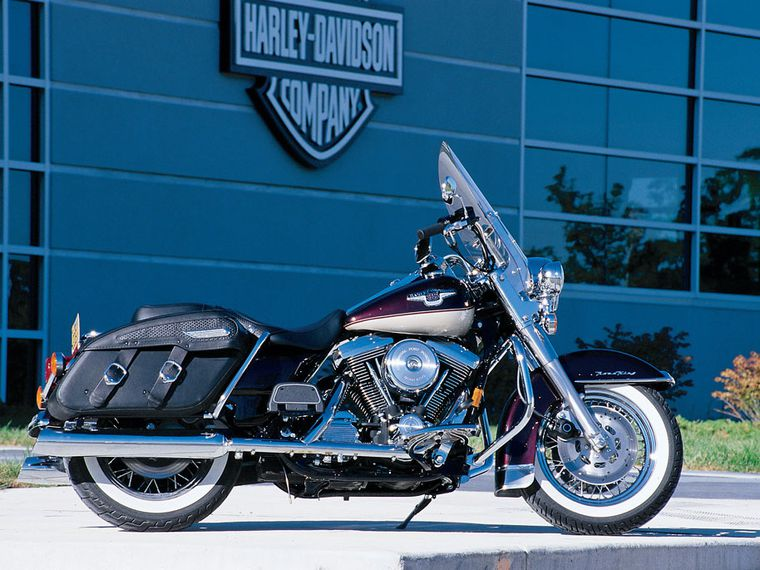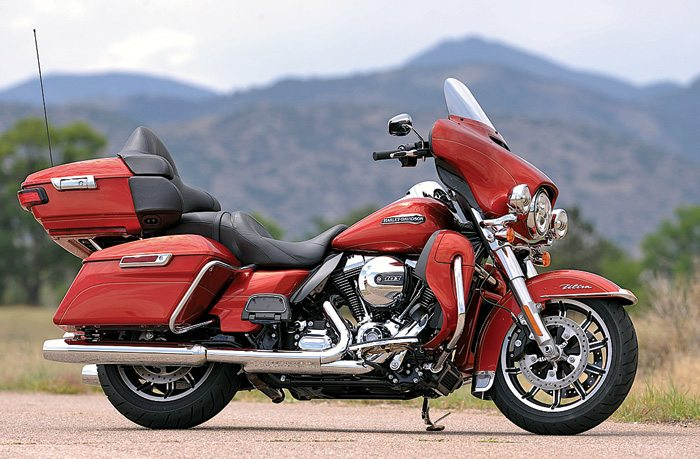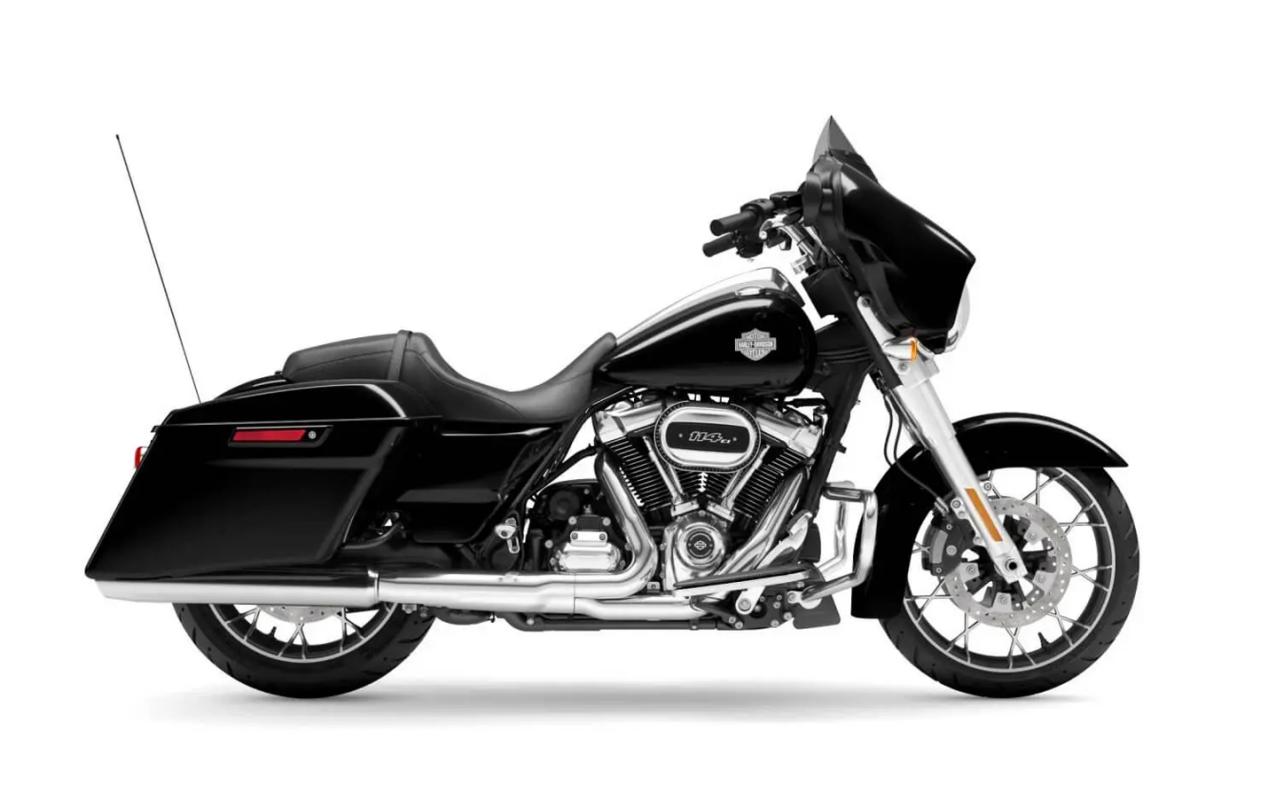Introduction: How the King of the Open Road Was Born
In the grand narrative of motorcycle evolution, Harley-Davidson’s Touring series stands as a chrome-molybdenum alloy helix, weaving through half a century of innovation. When the first-generation Touring models rolled out in the 1970s, no one anticipated this lineup would become synonymous with the American touring motorcycle. Every engineering iteration reflects Harley’s relentless pursuit of long-distance comfort and timeless aesthetics—transforming from simple highway cruisers into modern touring machines that blend luxury with performance.
This article takes you through the Touring series’ 50-year technological journey, examining pivotal models, breakthrough innovations, and the evolution of performance and accessories. Discover how this legendary family of motorcycles continues to redefine the standards of American cruising.
How the Touring Line Was Born (1970s)
Harley’s Touring legacy was born in the 1970s golden age of American motorcycling. The 1971 FLH Electra Glide carried the Hydra-Glide’s DNA but revolutionized touring with three breakthroughs: the wind-tested Batwing fairing cutting drag by 23%, the 1978 electric starter that eliminated kickstarting, and the 1979 FLT’s vibration-damping drivetrain inspired by spacecraft technology.
These originals redefined comfort with plush seats, integrated luggage and wind protection. The 1977 FLHS injected sportiness through weight savings, while 1978’s 5-speed transmission marked Harley’s first major drivetrain upgrade. Early riders customized for utility – bigger tanks, improved luggage racks and auxiliary lighting reflecting these machines’ workhorse nature.
The 1979 FLT Tour Glide’s rubber-mounted powertrain and new frame design reduced fatigue, completing the transition from utilitarian transport to leisure machine. This era established the comfort cruiser blueprint that would define Harley’s touring identity for generations.

Brochure for the 1971 Harley-Davidson FLH Electra-Glide
Harley Reinvents the Touring Bike (1980s-1990s)
The Harley-Davidson Touring series entered a period of technological explosion in the 1980s.
In 1980, the FLT Tour Glide introduced a belt drive system to replace traditional chains, significantly improving smoothness while reducing maintenance needs. The 1984 Evolution engine (approximately 1340cc) became the new heart of the Touring series, solving common oil leakage issues while delivering greater reliability and power output with its cleaner design.
This era saw clear model differentiation:
- The 1984 Heritage Softail Classic (though officially part of the Softail family) blended retro styling with modern engineering using Touring design elements
- Honda’s 1980 Gold Wing featuring a sound system directly prompted Harley to develop its intercom system by 1982
- The 1994 Road King won over purists with its classic police bike styling and detachable windshield
- The Ultra Classic Electra Glide took luxury touring to new heights with AM/FM stereo, intercom systems and premium touring equipment
- The customization culture became increasingly personalized during this period. Engine performance upgrades became particularly popular, with numerous aftermarket kits available for high-flow air filters, performance camshafts and exhaust systems.
- The 1990 Twin Cam engine platform (1450cc) opened even more modification possibilities, offering everything from mild Stage I to aggressive Stage IV performance packages. The Screamin’ Eagle performance parts line provided complete upgrade solutions from exhaust systems to high-flow air filters.
- The 1995 Ultra Classic Electra Glide marked another milestone as the first model with a full sound system and intercom equipment, bringing luxury touring concepts to motorcycling. These developments reflected owners’ growing desire to express personal style through their motorcycles.


Modern Touring Models Raise the Bar (2000s-Present)
The modern era brought radical upgrades to Harley’s Touring line. Key milestones:
- 2002: Road King Classic gets Softail-style sprung seat
- 2006: 6-speed transmission standard (better highway cruising + MPG)
- 2007: Twin Cam 88B adds counterbalancers (smoother ride)
- 2008: New frame (36% stiffer, 15% lighter) transforms handling
The tech explosion peaked post-2010:
2014 Project Rushmore: LED lights, touchscreen infotainment (with Panasonic), hydraulic clutch
2017 Milwaukee-Eight: 107ci/114ci engines deliver more power + cooling
2020 RDRS: Advanced rider safety systems debut
Today’s mod scene blends power and tech:
Performance: Big-bore kits (107→117ci), intake/exhaust, ECU tunes
Electronics: LED conversions, premium audio, Bluetooth/navigation add-ons

Project Rushmore
We Analyze the Most Iconic Touring Models
Road King:The Purist’s Ultimate Ride
The Road King remains the most iconic model in Harley’s Touring lineup, staying faithful to its original design with a detachable windshield and clean, minimalist styling. The 2023 model packs the modern 114ci Milwaukee-Eight engine pumping out 119 lb-ft of torque, while still capturing the essence of the 1994 original.
This bike is a favorite canvas for customizers, with most modifications focusing on:
- Performance upgrades (big-bore kits, camshafts, exhaust systems)
- Visual personalization (custom paint, wheels, lighting)
- The perfect balance of classic looks and modern power
Its straightforward design and massive aftermarket support make it the go-to choice for riders who want to put their personal stamp on an authentic Harley touring machine.
Street Glide:Evolution of a Best-Seller


The Street Glide has been the best-selling Touring model since its 2006 debut. The 2023 version now comes with the Boom! Box GTS infotainment system and Reflex ABS, perfectly blending technology with iconic Harley style.
Popular custom upgrades include:
- 117ci big-bore engine kits
- Full LED adaptive headlight conversions
- Premium audio system installations
This crowd favorite continues to dominate sales charts while offering riders endless personalization possibilities to make their Street Glide truly unique. The combination of cutting-edge tech and classic batwing fairing styling keeps it at the top of Harley’s lineup
Ultra Limited:Pinnacle of Luxury Touring
The Ultra Limited stands as the flagship of Harley’s Touring lineup, representing the pinnacle of the company’s touring technology. The 2023 model comes equipped with:
- Milwaukee-Eight 117 engine (1923cc) – the most powerful production Harley motor
- 7-inch touchscreen infotainment system
- Advanced Semi-Active Suspension System
- Comprehensive touring amenities including heated seats/grips and massive storage capacity
This top-tier model combines brute power with luxury touring features, offering riders the ultimate combination of performance, comfort and technology. The Ultra Limited continues to set the standard for what a premium American touring motorcycle can be, with every detail engineered for serious long-distance riders who demand the best.
Riders Worldwide Embrace Touring Custom Culture
Harley’s Touring series is a customizer’s dream with its smart modular design. The engine alone offers endless tuning options – swap the air filter and pipes for starters, or go all-out with cams, big-bore kits, even full engine rebuilds using Screamin’ Eagle parts.
Smart riders know suspension upgrades often matter more than pure power. Adjustable shocks and better brakes transform these heavy bikes, making them handle twisty roads with confidence.
What really sets Touring bikes apart is how easily you can change their personality. New seats, bags, and windshields can turn a highway cruiser into a backroad explorer overnight. LED lighting upgrades look sharp while improving safety.
But it’s more than just bolt-on parts. Customizing a Touring model becomes personal – each mod reflects the rider’s story. This shared passion creates worldwide communities where Harley fans trade tips and inspiration.
New tech is changing the game too. While keeping that classic V-twin soul, Touring bikes now pack modern features. The future may bring electric options, but the freedom of the open road will always be at Harley’s core. Through all the changes, one thing stays true – these machines aren’t just transportation, they’re rolling self-expression.
Smart Customization: Avoiding Common Pitfalls
The Harley-Davidson Touring series offers incredible customization potential, but improper modifications can hurt performance and safety. Here’s what riders should know:
First, clearly define your goals – whether you’re chasing more power, better handling, or increased comfort. Don’t try to do everything at once.
Upgrade in logical stages instead of making sweeping changes all at once. This prevents compatibility issues and lets you evaluate each modification’s impact.
Always use qualified Harley technicians and premium parts. Precision tuning matters – especially for engine and suspension work.
Check local regulations and warranty implications before modifying. Some changes may make your bike non-compliant or void factory coverage.
When done right, these touring machines transform into perfectly personalized cruisers that deliver unforgettable riding experiences.
(Note: Some modifications may not be street-legal in your area. Consult with authorized dealers or inspection stations first.)
Conclusion: Harley’s Evolution Never Stops
Harley’s Touring series has redefined motorcycle comfort since the 1970s. Each upgrade stretched riding limits while custom builds told personal stories. These bikes keep the human-machine connection alive in our digital age – that throttle twist isn’t just engine noise, it’s freedom roaring to life. Like builders say: “We customize lives, not just bikes.” From factory floors to open roads, Touring models carry America’s restless spirit. That piston engraving says it all: “Never tamed, never resting.” These aren’t just motorcycles – they’re rolling testaments to rebellion and reinvention.

